

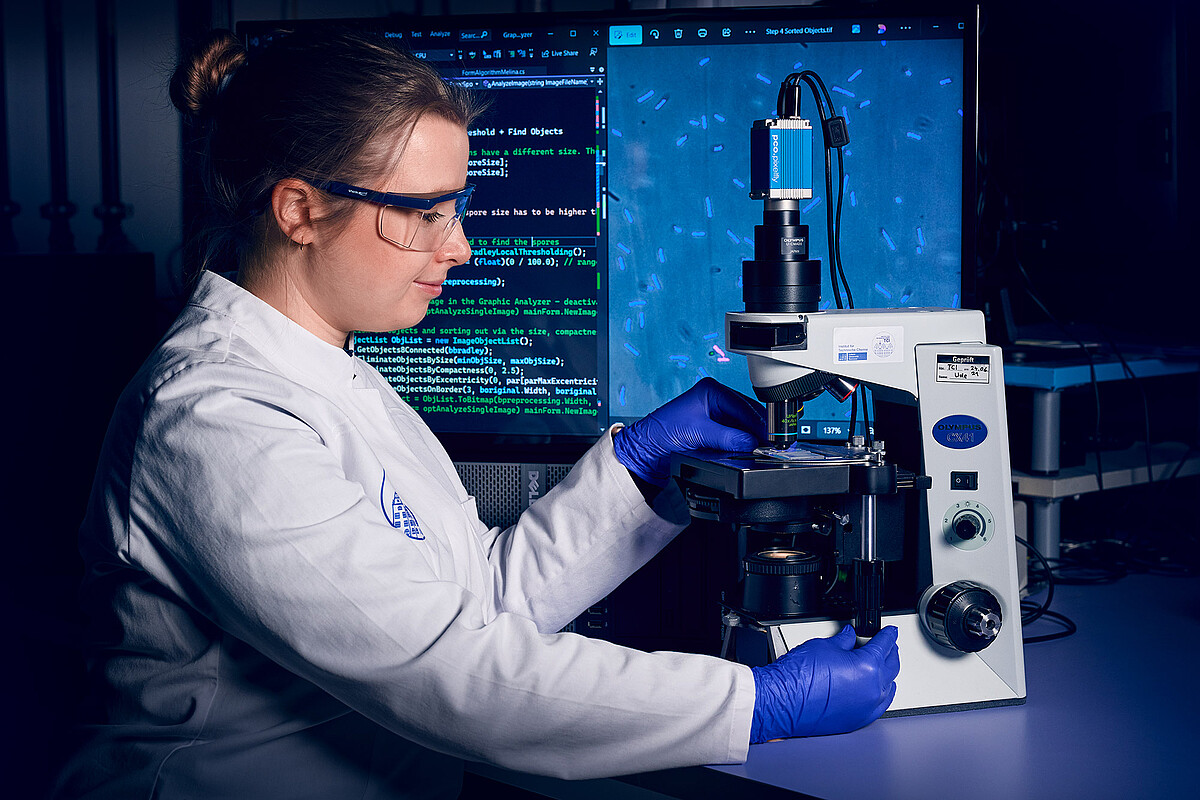 ©
Harry Köster/ harry-koester.de
©
Harry Köster/ harry-koester.de
The topics of the research group include device development in the area of optical sensors for bioprocesses (especially in-situ microscopy), the development and application of image processing algorithms, the use of bioinformatics methods for the analysis of DNA microarrays, the implementation of artifical neural networks and machine learning algorithms for the evaluation of sensor data.
Image Processing Algorithms
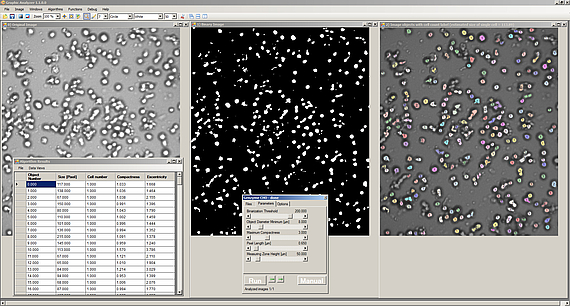
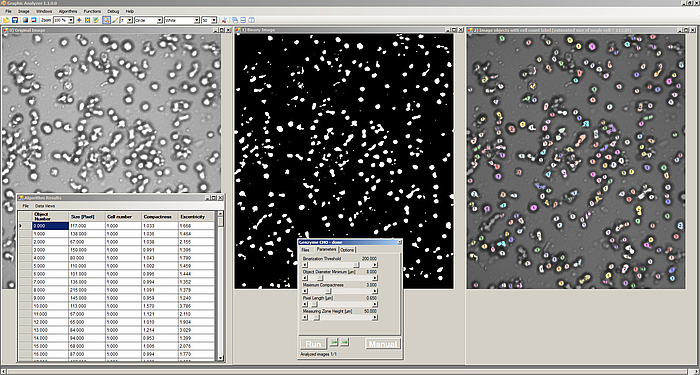
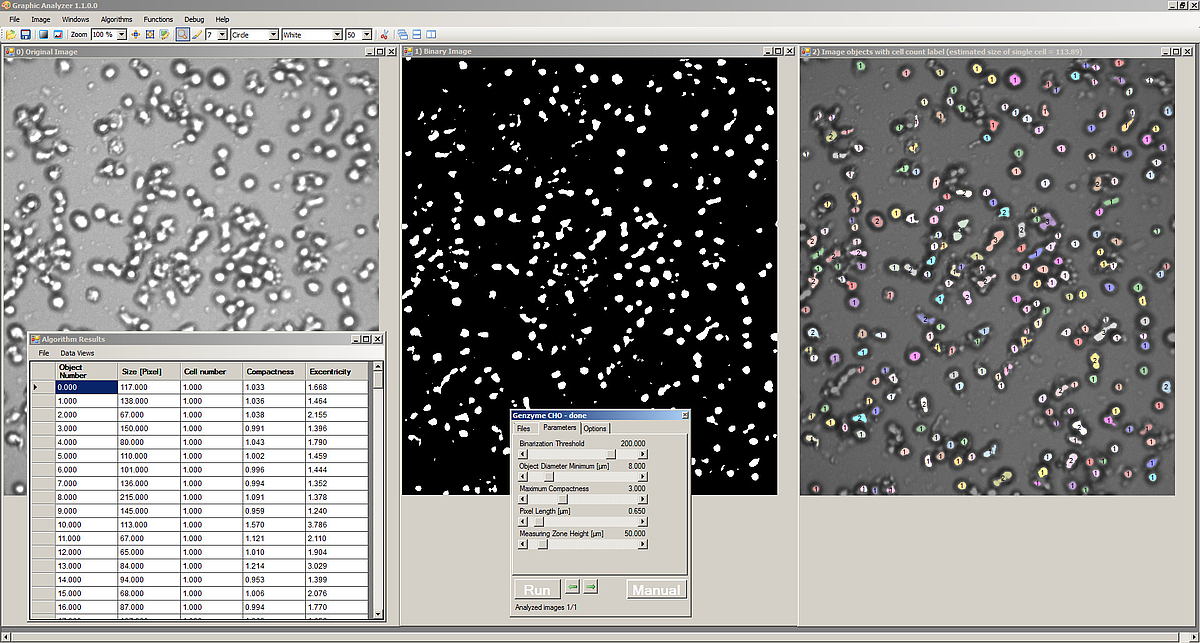
The aim of the advancements in the field of in-situ microscopy is the continuous improvement of the measuring system with respect to reproducibility, accuracy and versatility of its use. The measurement system has so far been successfully used in various processes, e.g. in cultivations of S. cerevisiae, E. coli, P. pastoris, CHO and Jurkat cells.
In addition to the biological applications, the ISM is also used for monitoring of chemical/technical processes e.g. in multiphase systems (edible oil purification) and for particle measurement (stability of enzyme carriers). A specially developed software allows the automatic control of the measuring system and the image acquisition. For image analysis image processing algorithms are developed and applied. Target parameters are mostly cell number, cell concentration and the size distribution and morphology of the cells.
In cooperation with project partners image processing algorithms have also been developed outside the scope of bioprocess applications. Examples for this include algorithms for membrane surface analysis (pore size distribution) and metallic surfaces.
Analysis of DNA microarrays


 ©
Harry Köster/ harry-koester.de
©
Harry Köster/ harry-koester.de
The work on microarrays aims at the analysis of the key influencing factors during production and measurement of microarray chips. These include, for example, spotting parameters, dye dependent effects and photobleaching. The lack of understanding of these effect hampers easy and precise interpretation of microarray results. Therefore the development of mathematical models of these influence factors is the main focus of work in this area. Statistical methods and normalization algorithms are developed and validated to improve the quality, reproducibility and thus the predictive value of microarray data.
Software Development
Further work of this group includes the software development of smart lab applications (measuring device networks and more) and the implementation and use of optimization algorithms, multivariate data analysis, artificial neural networksa and machine learning methods. The programs of this group are written primarily in C#.NET and Matlab but also in Python and VBA.
Contact
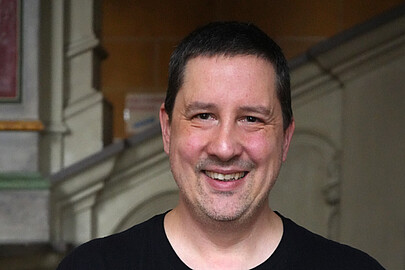
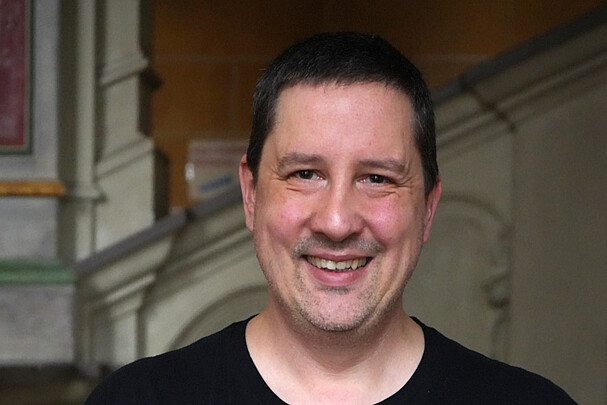
30167 Hannover




